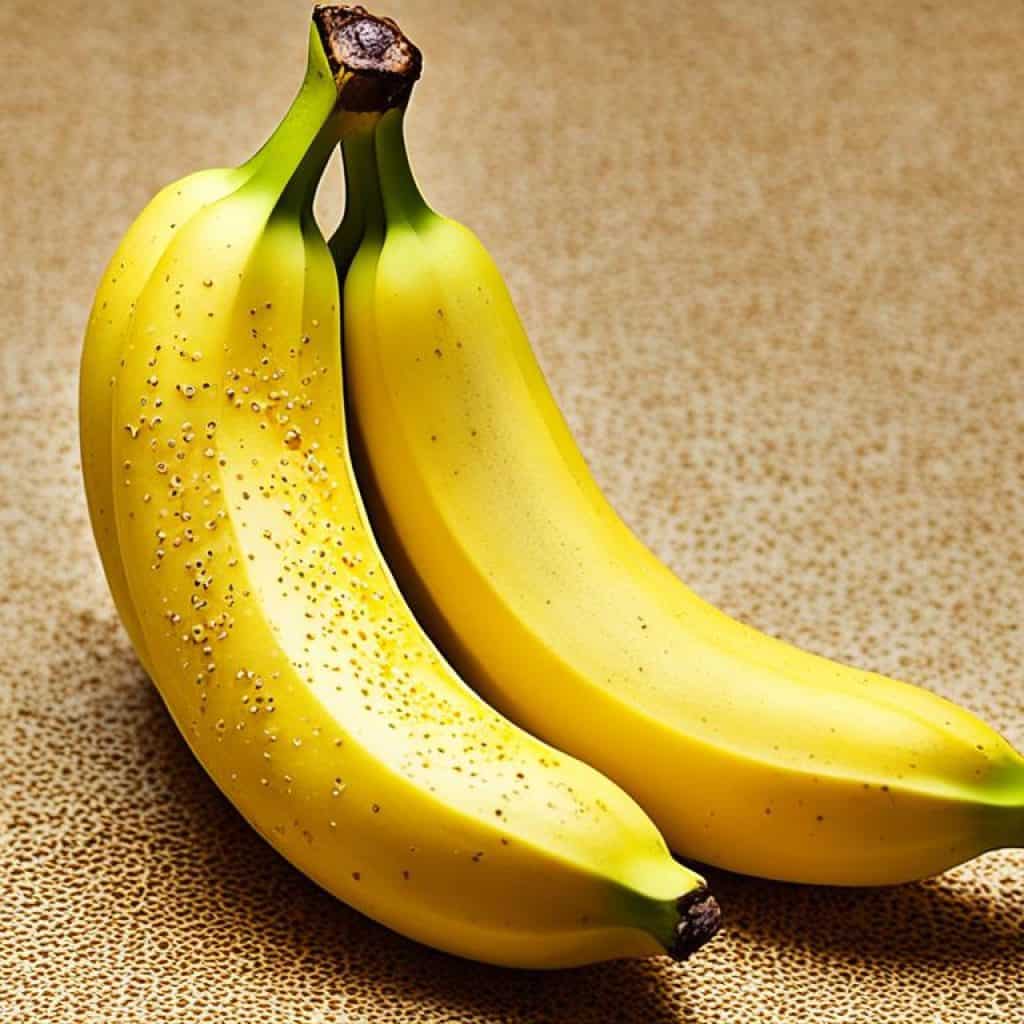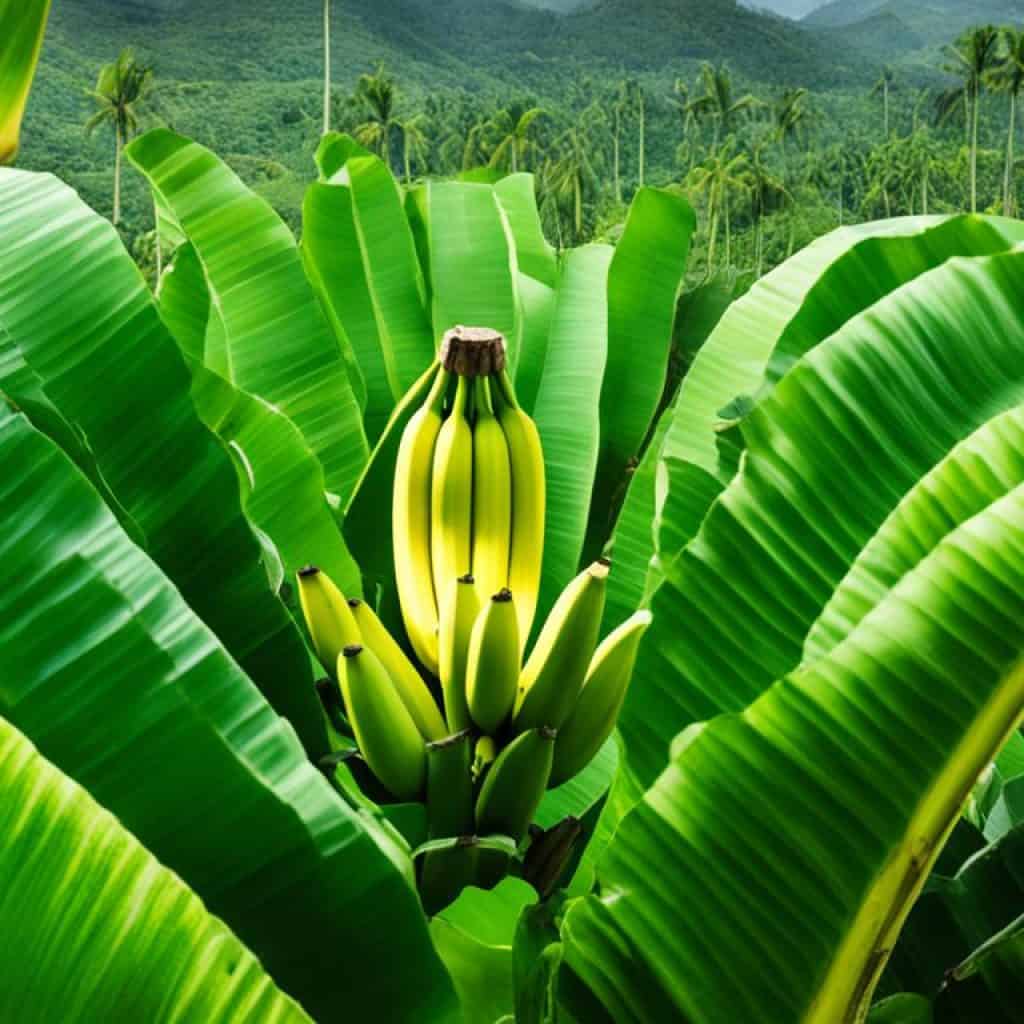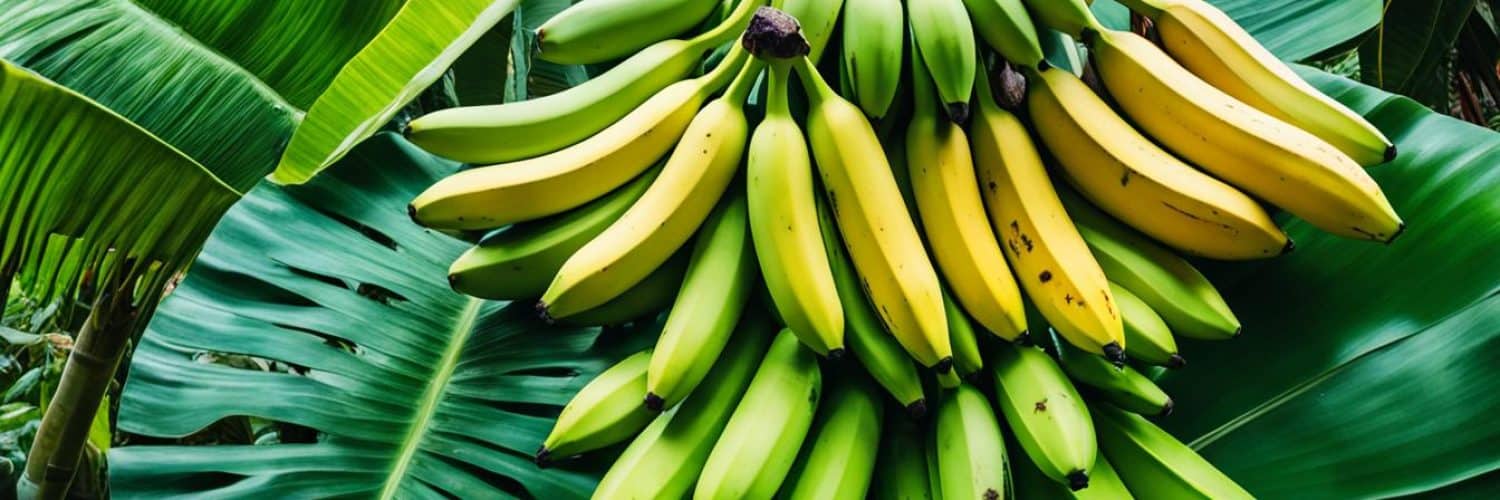When it comes to bananas, most people are familiar with the popular Cavendish variety. But did you know that the Philippines is home to a wide array of banana cultivars? From indigenous varieties to exotic species, the Philippines boasts a diverse and unique selection of bananas that are cherished by locals and fruit enthusiasts alike. So, if you’re curious about the different kinds of bananas in the Philippines and want to learn more about their flavors, textures, and origins, keep reading!
Key Takeaways:
- The Philippines is known for its rich collection of banana cultivars, with over 100 different varieties identified.
- The Lakatan banana is one of the most common cultivars, characterized by its bright yellow peel and custardy flavor.
- Another popular variety is the Latundan banana, known for its tangy taste and fluffy texture.
- The Saba banana is widely used in Filipino cuisine due to its versatility and distinct meaty texture.
- Other unique varieties include Señorita, Cavendish, Lagkitan, Bulkan, Morado, Inabaniko, Bungulan, and Utungan.
Ready to dive into the fascinating world of Filipino bananas and explore their diverse flavors and textures? Let’s start with the iconic Lakatan banana!
Lakatan
Lakatan is one of the most common banana cultivars in the Philippines. It is known for its bright yellow peel and distinct yellow-to-orange flesh. The flavor of Lakatan bananas is well-balanced, with a slightly tangy and custardy taste that is incredibly enjoyable. When you take a bite, you’ll notice that the texture is moist and dense, creating a creamy sensation in your mouth.
Aside from being popularly known as Lakatan, this banana variety goes by different names in other regions. In Misamis Occidental, it is called Mapang. In Malaysia, you may find it as Pisang Berangan. In Indonesia, it is referred to as Pisang Barangan. And in Thailand, it is known as Khuai Hom Maew.
With its delectable flavor and luscious texture, Lakatan is a beloved banana variety that you definitely need to try.
“The flavor of Lakatan bananas is well-balanced, with a slightly tangy and custardy taste that is incredibly enjoyable.”
Latundan
Latundan is another common banana variety in the Philippines, particularly in Manila. It has a fatter and pointier shape compared to Lakatan. The peel is thin, with a pale flesh inside. The flavor is tangier and more tropical-tasting than Lakatan. The texture is less dense and fluffier, becoming more slippery and creamy with each chew. Latundan bananas are also known as Tundan in Cebu, Turdan in Tagalog, Cantong in Misamis Oriental, Pisang Rastali in Malaysia, Pisang Raja in Indonesia, Kluai Nam in Thailand, Chuoi Goong in Vietnam, and Silk Fig in the West Indies.
Latundan Banana Facts:
- Shape: Fatter and pointier shape
- Peel: Thin, with a pale flesh inside
- Flavor: Tangier and more tropical-tasting than Lakatan
- Texture: Less dense and fluffier, becoming more slippery and creamy with each chew
Latundan bananas offer a unique combination of tangy flavor and fluffy texture that sets them apart from other common banana varieties. Known by different names in various regions and countries, Latundan bananas are a popular choice for both fresh consumption and culinary applications.
“The sweet-tangy flavor and creamy texture of Latundan bananas make them a delightful addition to smoothies, baked goods, and desserts.”
| Common Names | Country/Region |
|---|---|
| Tundan | Cebu |
| Turdan | Tagalog |
| Cantong | Misamis Oriental |
| Pisang Rastali | Malaysia |
| Pisang Raja | Indonesia |
| Kluai Nam | Thailand |
| Chuoi Goong | Vietnam |
| Silk Fig | West Indies |
Saba
Saba bananas, also known as Dippig in Ilocos, Pisang Kepok in Indonesia, Pisang Nipah in Malaysia, and Kluai Hin in Thailand, are considered the most important cultivar in the Philippines. These bananas have a wide variety of uses in Filipino cuisine and are highly valued for their versatility. While they may be larger and stubbier compared to other banana varieties, Saba bananas offer a unique taste and texture that sets them apart.
Unlike dessert bananas, Saba bananas are less sweet. However, when ripe, they can be tangy and aromatic, adding depth and flavor to dishes. The texture of a ripe Saba banana is moist and sticky on the inside, with a meaty and leathery chewiness on the outside. This distinct texture contributes to their popularity in various Filipino recipes.

The Versatility of Saba Bananas
Saba bananas are utilized in a wide range of Filipino dishes, both savory and sweet. Due to their sturdiness and ability to hold their shape when cooked, they are often used in traditional banana-based delicacies such as turon (a deep-fried banana spring roll) and maruya (banana fritters). The unique texture of Saba bananas adds a delightful chewiness to these treats.
Additionally, Saba bananas are commonly used in kakanin (rice cakes), like biko and suman. They provide a subtle sweetness and a creamy texture to these traditional Filipino desserts. Saba bananas are also enjoyed in their simplest form, either boiled or steamed, as a healthy and satisfying snack.
The Economic Importance of Saba Bananas
Not only are Saba bananas valued for their culinary contributions, but they also hold significant economic importance in the Philippines. The cultivation and export of Saba bananas provide livelihood opportunities for many Filipino farmers, contributing to the country’s agricultural sector.
Saba bananas are highly versatile in Filipino cuisine, offering a unique taste and texture. Their tanginess and aromatic qualities, coupled with their distinct chewiness, make them a staple in a wide range of Filipino dishes. Whether deep-fried, steamed, or incorporated into traditional desserts, Saba bananas never fail to add a delightful twist to every recipe.
Señorita
The Señorita banana is a smaller variety commonly found in the Philippines. With its vibrant yellow-orange peel and compact size, it stands out among other banana cultivars. What sets Señorita bananas apart is their unique flavor profile, making them a favorite among fruit enthusiasts.
The flavor of the Señorita banana can be described as sweet and aromatic. When you take a bite, you’ll notice a delightful grassy taste that adds an interesting twist to its overall sweetness. This combination of flavors makes Señorita bananas a truly distinct choice.
Aside from its exceptional taste, the Señorita banana also offers a delightful texture. It is firm and creamy, with a hint of butteriness that adds a luxurious mouthfeel. The smooth texture of the Señorita banana further enhances the overall eating experience.
Although smaller in scale compared to other banana varieties, Señorita bananas offer a burst of flavor in every bite. While they may be less common and not as widely available, you can occasionally find Señorita bananas in select supermarkets in Metro Manila.
If you’re looking to add some variety to your fruit selection, don’t hesitate to try Señorita bananas. Their unique flavor, delightful texture, and smaller size make them a great addition to any fruit bowl or culinary creation.
Cavendish
The Cavendish banana holds the title of being the most widely grown and traded banana variety in the world. Unlike the vibrant yellow color of Lakatan bananas, Cavendish bananas have a slightly less saturated hue, making them stand out visually. When fully ripe, Cavendish bananas develop freckle-like spots on the skin, indicating their readiness to be savored.
What sets the Cavendish apart from other banana varieties is its milder flavor profile. While not as intense as its counterparts, the taste of a fully ripe Cavendish banana is undeniably sweet and pleasant. As you take a bite, you’ll notice a lighter and fluffier texture, providing a satisfying bite without being overly toothsome.
It’s worth noting that Cavendish bananas come in two primary cultivars: Williams and Grand Naine. However, it remains uncertain which specific variant is commonly sold in the Philippines.
“The Cavendish banana is a true global icon. Its widespread cultivation and popularity make it a preferred choice for consumers worldwide.”
Despite its name recognition, the Cavendish remains a staple in households and markets around the Philippines. Its versatility and availability make it an accessible choice for both consumption and culinary experimentation.
Lagkitan
Lagkitan bananas are a popular variety in the Southern Tagalog region of the Philippines. These bananas have a pale yellow peel, resembling Saba bananas, and a shape similar to Latundan bananas. What sets Lagkitan bananas apart is their unique flavor profile. They offer a delightful combination of sweetness and tanginess, with a subtle bubblegum-like undertone that adds an enjoyable twist to their taste. When it comes to texture, Lagkitan bananas are stickier and slipperier compared to the starchier Latundan bananas, offering a more enjoyable eating experience.
In addition to their popularity in the Philippines, Lagkitan bananas are known by different names in other regions. In Palawan, they are called Katali and Botolan. In Malaysia and Indonesia, they go by the name Pisang Awak. And in Thailand, Lagkitan bananas are referred to as Kluai Namwa Luang.

Comparison of Banana Varieties
| Banana Variety | Peel Color | Flavor | Texture |
|---|---|---|---|
| Lagkitan | Pale yellow | Sweet and tangy with a bubblegum-like undertone | Sticky and slippery |
| Saba | Yellow with hints of green | Tangy and aromatic | Moist and sticky on the inside, meaty and leathery on the outside |
| Latundan | Pale yellow | Tangy and tropical-tasting | Less dense and fluffier |
| Cavendish | Less saturated-yellow with freckle-like spots when ripe | Milder, sweeter when fully ripe | Lighter and fluffier |
Bulkan
The Bulkan banana, also known as Bungulan, Buñguran, Buluñgan, Balañgon, Lacatan, or Pisang Masak Hijau, is a delightful variety found in the Southern Tagalog region of the Philippines. With its slightly more vivid yellow peel and rounded shape, the Bulkan banana shares many similarities with the Lagkitan banana.
What sets the Bulkan banana apart is its unique flavor profile. When you bite into a Bulkan banana, you’ll be greeted with a burst of sweet, tangy, and bubblegum-like taste. It’s truly a tropical delight for your taste buds.
Not only does the Bulkan banana taste fantastic, but it also has a smooth and waxy-creamy texture. As you savor each bite, you may occasionally come across small seeds, adding an interesting textural element to the experience.
It is still uncertain whether the Bulkan banana is a distinct cultivar or simply a variation of the Lagkitan banana. Regardless, its unique characteristics make it a popular choice among banana enthusiasts in the Southern Tagalog region.
| Bulkan Banana | Characteristics | Flavor Profile |
|---|---|---|
| Peel | Slightly more vivid yellow when ripe, rounded shape | Sweet, tangy, and bubblegum-like |
| Texture | Smooth and waxy-creamy, occasional presence of seeds |
Morado
Morado bananas are unique and relatively rare in the Metro, but they can be found in areas such as Mindoro and Baguio. This variety features a distinctive purplish-red skin and pale-yellow flesh. The flavor of Morado bananas is subtly sweet with hints of grassiness and subtle pineapple-like notes. Its texture is firmer compared to other varieties like Lakatan and Latundan, but still similar in overall consistency.
“The Morado banana is a delightful surprise for those who seek a different and visually striking banana experience. Its vibrant purplish-red hue adds a touch of elegance to any fruit bowl, while its unique flavor offers a balance of sweetness and subtle tanginess. With its firm texture, Morado bananas are perfect for eating fresh or incorporating into various culinary creations.”
Inabaniko
Inabaniko bananas, also known as Binendito, Domino, Oremos, Ripping, Praying Hands, and Uht Kapakap, have a unique appearance that resembles a closed human fist with clusters of tightly packed fingers. These bananas are truly a sight to behold!
When it comes to flavor, Inabaniko bananas offer a tangy and rustic grassy quality that sets them apart from other varieties. Some people even detect a subtle hint of vanilla, adding an interesting twist to their taste. If you’re a fan of bold and distinctive flavors, Inabaniko bananas won’t disappoint.
In terms of texture, Inabaniko bananas are similar to Saba bananas, with a firm and chewy flesh. Their dense consistency provides a satisfying bite that banana lovers will appreciate. Whether eaten fresh or incorporated into your favorite recipes, Inabaniko bananas bring a unique taste and texture to the table.
If you’re looking to try something different and explore lesser-known banana varieties, don’t miss out on the Inabaniko banana. Its striking appearance, tangy flavor profile, and firm texture make it a truly fascinating fruit.

Stay tuned for the next section, where we’ll discuss another exciting banana variety!
Bungulan
The Bungulan banana is a unique variety that remains green even when ripe. It is commonly used in making delicious banana bread, thanks to its melon-like flavor with a hint of bubblegum. The Bungulan bananas can grow up to an impressive 12 inches in size. When it comes to taste, they are similar to the popular Lakatan bananas, offering a perfect balance of sweetness, tanginess, and creaminess. In addition to Bungulan, this banana variety is also known as Buñguran, Buluñgan, and Balañgon.
| Common Name | Scientific Name | Flavor | Texture |
|---|---|---|---|
| Bungulan | Musa acuminata | Melon-like, bubblegum-y | Creamy, smooth |
With its unique characteristics, Bungulan is a delightful addition to the diverse range of banana cultivars in the Philippines. Its vibrant green color even when ripe sets it apart, making it visually appealing as well as delicious. Whether enjoyed as a snack or incorporated into various recipes, Bungulan bananas offer a distinct and enjoyable flavor experience.
Utungan
Utungan bananas are a unique variety with clusters of tightly packed fingers, resembling a closed human fist. These bananas offer an intriguing combination of flavors and textures that set them apart from other cultivars. The flavor of Utungan bananas is tangy, similar to Saba bananas, with a hint of rustic grassiness. Some sources even mention the presence of a delightful “vanilla flavor.” When it comes to texture, Utungan bananas share similarities with Saba bananas, providing a chewy and starchy experience.
Utungan Banana Facts
Here are some interesting facts about Utungan bananas:
- Utungan bananas have clusters of tightly packed fingers, giving them a unique appearance.
- The flavor of Utungan bananas is tangy and may surprise your taste buds with its rustic grassy quality.
- Some people describe the flavor of Utungan bananas as having hints of vanilla.
- When it comes to texture, Utungan bananas are chewy and starchy.
- Utungan bananas are a lesser-known variety, but they offer a distinct taste experience.
If you’re looking for something different to try, Utungan bananas might be the perfect choice. Their tangy flavor and chewy texture offer a unique twist on the classic banana taste. Whether enjoyed on their own or incorporated into a recipe, Utungan bananas are sure to delight your taste buds and add some excitement to your culinary adventures.
Conclusion
The Philippines is a treasure trove of banana varieties, offering a wide array of flavors, textures, and appearances. From the commonly known Lakatan and Cavendish to the more elusive Morado and Utungan, Filipino bananas provide a diverse and delightful selection for banana enthusiasts. Whether enjoyed fresh and ripe, cooked in delectable dishes, or baked into tempting desserts, bananas are an integral part of the Filipino culinary culture.
Each banana cultivar has its own unique characteristics that make it stand out. Lakatan’s creamy texture and tangy-sweet taste offer a satisfying bite, while Cavendish’s mild flavor and lighter consistency make it a versatile choice. The rarer Morado and Utungan present their own distinctive profiles, appealing to those seeking more adventurous flavors.
As you explore the fascinating world of Philippine bananas, you’ll journey through a landscape rich in agricultural heritage. These vibrant fruits not only provide nourishment but also showcase the country’s agricultural prowess and biodiversity. So, go ahead and savor the goodness that Filipino bananas bring – a taste of the Philippines straight from nature’s bounty.


















Add comment